First published on November 25, 2014 • Last updated on September 18, 2025
This page may contain affiliate links; if you purchase through them,
we may receive a small commission at no extra cost to you.
Inca Trail, Day 1
I decided we could afford four so I let our trusty travel agent in Peru know of our interest and he took care of the rest. Thank goodness because choosing a company via online research is overwhelming. There are no dedicated sites that just list all the companies, no way to compare them head-to-head, and I didn’t even know where to start. Honestly, South American travel overall is a headache to plan when you are used to the well-organized information available in the US and Europe.
Our trip really started the night before. At 7pm in the evening, we met our guide Fredy. Yes, his name really is Fredy with a single ‘d’. He is joined by many other Peruvian men with anglicized names like Jimmy, Calvin, Daniel, and Alexander. Fredy was named for Freddie Mercury and he told us it was rather confusing growing up in his village because several sets of parents were enamored with the singer and he was not the only Fredy in town.
Fredy was there to give us a run down of the trip. Honestly, some form of this should have happened before we arrived in Peru. Luckily, we came well prepared and the differences between Fredy’s list and the travel agent’s were things we had already thought to pack. He shared a detailed map with us and a graphic showing the altitudes we would reach during each day’s hike. Day 1 was what I expected and was graded Easy. Day 2 was marked Challenge but that wasn’t a big surprise either; it was the day we would reach our highest point of altitude and we expected it to be difficult. Unfortunately, it was also the day that Fredy added two more hours of hiking so that we could stay at a quieter campsite further along the trail. The most difficult day just became 2 hours longer and I hadn’t yet started to hike. Day 3 was sounding like a breeze because we would have 1/2 the day free for exploring. And Day 4 would cap it all off; it was the day we would reach Machu Picchu.
We had only a couple of hours before bedtime and an early departure of 5:15am so it left us little time to run down the things we still needed, snacks and toilet paper. It also gave us only a few hours to consider Fredy’s words about taking enough money for emergencies. I know sprained ankles happen on the trail but this sounded like he was talking about more than your average hiking injury. It was rare, but sometimes people had to come back by mule (day 1) or be carried out by porters (days 2-4), mainly due to altitude sickness. I am sure my eyes got real wide as he was speaking; I will admit I did not read detailed reports about the trail but I had no idea that porters had ever carried folks back to safety. I filed the info in the back of my head and later tucked away our cash reserves in a safe place in the backpack.
At 5:05 in the morning, I was knocking on my boys’ door to make sure their alarms had worked. They hadn’t. Luckily, they had packed the night before and with lightening speed they made it downstairs with time to spare… We were greeted by Fredy and gang soon after we got downstairs. They arrived in a large white van that had room for at least a 12 people. And it was already pretty full. Our group would eventually be made up of 6 hikers, our guide, and 7 porters, one of whom was also the cook. We still had a few porters to pick up but for the moment we were ready to head on our way.
The early morning drive was quiet and most of us slept. We drove through a patchwork of freshly turned earth and planted fields in multiples hues of green, all with a backdrop of Andean foothills and low lying clouds. Farmers were out in the fields, some in groups of four and five using hand mattocks to turn the dirt, another using a pair of oxen and a plow. Several families were picking vegetables and children were walking farm animals along a dirt track. We saw cows and chickens and sheep. We saw turkeys and dogs and pigs. Boy, did we see pigs. I saw huge fat pigs rolling around in the dirt right next to the road and small baby pigs playing in the ditches. Pigs were everywhere.
The homes and outbuildings were built from red adobe brick the same color as the earth in the field. Many were whitewashed and painted with advertisements. At first, I wasn’t sure what a lot of the ads meant because they did not include words. I saw a large stylized shovel painted on one house and then a few miles away that same shovel with a line painted through it. I thought it might be some strange way to say it was or was not safe to dig in that location. Then I noticed painted soccer balls and a huge sun with rectangular rays. Sometimes a name was painted next to them and all of a sudden it dawned on me. These were political advertisements. In a country where not everyone reads, though literacy rates are high, advertising has to be easy to understand. And, in a country with more than just Democrats and Republicans, symbols have to be more diverse than just elephants and donkeys. I later asked and learned that 2011 had been an election year.
A couple of hours later, we arrived in the town of Ollantaytambo for breakfast. The restaurant offered a fairly typical buffet of cereals, sliced ham, cheese, and bread but with the addition of the all-American pancake (my boys hadn’t seen pancakes for months!). But the best part about the restaurant was the place itself. We walked through an archway into a garden full of yellow and white flowers, brilliant green grass, and a thatched covered building at the far end of the garden. The Andes mountains rose up behind the building and the tops of the mountains where shrouded in white, puffy, clouds that moved with a mesmerizing slowness. My youngest grabbed the camera after breakfast to take pictures of the guinea pigs in the hutch outside and he heard Fredy tell a story about raising a pet guinea pig when he was a child and how when the pig got big enough, the family ate him for dinner.
When we jumped back in the van we found that new porters had joined our ranks. Gear was spilling into every spare crevice of space so we practically used a shoe horn to get us all in and back on the road. This time, we left the pavement for a dirt road the width of our vehicle and headed alongside some farmland nestled next to the Rio Urubamba.
A few kilometers later and we were spilling back out of the van into a huge parking lot that several tour groups were using as a staging ground. Tarps got thrown on to the gravel and our gear got tossed onto that. Porters were busy assembling their packs and we got down to the business of sunscreening and taking of layer after layer of clothes. We had no idea it was going to be so warm. Fredy had on shorts and the rest of us were beginning to wish we had worn them as well. Instead, we were in hiking pants and layered shirts to combat the cold we had been feeling for the last couple of days. Local women kept coming up to us to sell us items – bandanas, rubber tips for hiking poles, bottles of water, as well as coca leaves and coca candy to help with the altitude.
I could feel the excitement rising. We were finally here, the trip that I had been planning for months and we were about to start taking our first steps. The weather was dry, the sun, though not shining, was teasing us, the clouds, at least for the moment, were held at bay – all good auspices for the beginning of a backpacking trip.
Some of you might be wondering what we actually had to carry. If you are an avid backpacker, you will know that carrying camping gear on your back can get pretty damn heavy. The porters were hired to do the heaviest lifting; they carried the kitchen supplies, including food and fuel for cooking, the tents, the camp table and camp stools. We each personally carried clothes for all weather conditions, including cold and rain, our sleeping bags, our sleeping pads, and snacks. My husband and I each had a small set of binoculars as we hoped to do some birding and my son and I brought sketchpads but both left our trusty reading books behind. Add a few little things like headlamps and toothbrushes and a bathing suit for a trip to Agua Calientes at the very end of it all and we had bulky packs but not the heaviest we have carried.
The actual hike starts at a small building where the National Park Service checks permits. We had purchased our permits months ahead and were glad that we did. Although we were hiking in the off-season, all permits were sold out. We did hear later that some people show up a couple of days before and find a tour company to take them but I am unsure how they acquire their permits legally. Ours were marked not only with our names but with our passport numbers and the staff at the checkpoint did a very careful job of making sure everything matched up.
We then crossed the Rio Urubamba on a wooden pedestrian bridge and hit the Inca Trail!
It felt good to be hiking again. After a year of city living, we miss being in the out-of-doors and the smell of crisp, damp air untainted by car exhaust was exhilarating to us all. Better yet, we love being able to spot a bird, discover a new insect, or spy a shy flower hiding under the brush. This trail did not disappoint. We saw several new flowers and some more common ones, like the prickly pear cactus common to the desert Southwest. Fredy told us that local children love the fruit so much that they often eat it until they get sick to their stomachs. We also saw bell-shaped, white flowers that hung like pendulums from their bushy branches; they were called Angel’s Trumpet. They are used by the native community as a ritualistic hallucinogen. Other plants were vaguely familiar and I recognized the occasional houseplant from the United States. It was a reminder that many of the plants we see in our daily lives originally come from South America.
We also saw some great insect life. Much to the surprise of our fellow hikers, my young men spotted a small scorpion, a gigantic millipede, and a strange armored insect that had only 6 legs but looked like he should have been a centipede. Fredy also pointed out a bizarre little insect that lives on the cactus of the prickly pear, the chochineal. These insects have been used for centuries as a dye. Depending on the mordant used, a wide range of reds and oranges can be had as well as a deep purple. While searching the internet for more information to share with you, I came across the work of an amateur naturalist in Texas who photographed these insects and their brilliant red dye; his work is simplistic but appealing to an inquiring mind.
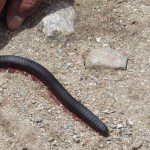 |
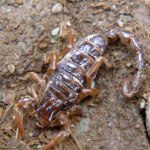 |
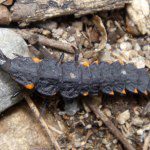 |
This part of the trail served as an open window into a unique culture. We crossed paths with locals and their horses, heavily loaded with goods, perhaps water and snacks for sale at a rest stop further ahead, or empty packs walking in the other direction. We hiked past local communities tucked into the hillsides where families raise animals and grow crops on the terraced land. Fredy said that these families are prevented by the government from building permanent structures in the National Park. Their lives are simple. Though the communities have running water and electricity, they seem to have little else. There are no schools or libraries, for example. A porter’s salary brings home more money than farming and can help send kids to school in the larger communities of Cusco or Agua Calientes. Porters will work as many as 4 trips a month and then work on the family farm in between trips in order to maximize their earning potential.
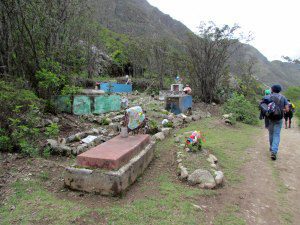
The more we hiked, the more it became apparent that I was the slowest in the group and it wasn’t just because I like to take photos. The gradual uphill was manageable and shouldn’t have been considered a difficult hike at all. I have hiked much harder in Yosemite. But my ability to take a deep breath was not keeping up with my ability to hike well. If I pushed to go faster, I quickly felt like I was on a treadmill at the gym and pushing my heart beyond the limit recommended by the machine. I was not getting enough oxygen to perform well.
On this first day of hiking, not keeping up with the group wasn’t too bad. We had stops almost every hour, usually near a small community that sold water, sodas, and snacks and provided a small bathroom in exchange for a single Peruvian Sol. My slowness meant that everyone else got well rested while they waited for me to catch up. Then, after I caught my breath, had some water, maybe went to the bathroom, we started again. I stopped taking as many pictures. I hate holding people up and I was very frustrated that my body refused to cooperate. I was mad at myself for not spending more time at the gym, or pushing myself harder while there. My daily walks in the city, though lengthy, were on the flat and hadn’t helped as much as I had hoped.
As we hiked, we were also passed by group after group of campers and their porters, not necessarily traveling together. The porters were unbelievable. They carried huge loads, supposedly limited to 25 kilos, and practically ran up the trail. Their packs were often makeshift without padded straps or specially designed frames. For the most part, they wore sandals without socks though we saw the occasional pair of Converse or well-worn hiking boots. Porters seemed either very young, in their teens and early twenties, or much older and in their fifties and sixties.
The porters would occasionally take a rest but rarely take off their packs so you would see them leaning against tall rocks to take the weight of their shoulders. One place where they truly seemed to take a break was near a small community where the women sold chicha, corn beer that is lightly fermented. Fredy called it Andean Gatorade because the porters drink it for the energy that it gives them.
Although I didn’t have the equivalent to chicha to help me on my hike, I did have the knowledge that beautiful vistas were to be seen up ahead; it made it easier to push on. My favorite stop of the day was at an overlook of the ancient city of Llactapata. The names of Inca sites are not necessarily their original names. This site is a good example. There are others in Peru known by the same name – in Quechua, llacta simply means town and pata means a height – a the description that fits many an Inca ruin. Hiram Bingham, the first scientist to reach Machu Picchu, gave names to many of the sites in the area, even some that were already known by a different Quechua name.
Llactapata was a small town with an urban sector high on the hill. Below the town, in the terraces, they would grown corn and other crops, and lower in the large fields, they grazed llamas. This town was a stop along the Inca Trail and was likely used not only for agriculture but as a place for travelers to rest and exchange tired llamas for fresh and for Chaskis, messengers who travelled between Inca towns, to pass their messages on to the next runner, much like our pony express without the ponies. The site is visually appealing for its curved and terraced walls immediately next to the stream. There is a location that some believe is a temple to water. There are also outbuildings that may have been used for storage and others to house guards protecting the trail.
We stopped for lunch by the river and I thought it would be a good chance to recuperate and regain some energy. It also was a chance to find out just why the porters were carrying so much gear. When we backpack at home, lunch is usually a handful of nuts and dried fruit, some tortillas and whatever filling we have for the day, be it a hard salami and cheese or some rehydrated hummus. I wasn’t expecting much better, maybe sandwiches and some fresh fruit. Oh my, was I ever wrong. First, we show up and the porters had already pitched two tents, one for the cook and kitchen crew and one for our dining table. I was disappointed because I had wanted to sit down by the river and enjoy the view, not hide in a tent, but about 20 minutes after lunch started I was happy that they had thought ahead… the rain had started to fall. We would have been drenched without cover.
All of our lunches began with a starter of some kind. That day was a stuffed avocado. The starter was always followed by a hearty soup, often with quinoa and always with vegetables. Then the porters delivered the main dish, always a protein. During the course of our four days we ate beef, chicken, and fish. And the main was served with rice and potatoes, a common Peruvian combination, and more vegetables. Full yet? Dessert came next. Then coca tea. I have taught my sons that when backpacking we always finish the food put before us because if we didn’t, it meant that someone had to pack it out as trash. There was no way I could eat all the food put before me. On this first day, I tried because I didn’t want to be rude. It was a mistake. After lunch, hiking was even more difficult because my body was now trying to digest all the food I had eaten. Now my poor heart not only had to provide oxygen to my muscles in my arms and legs but to my stomach as well. My lungs were still not able to take a full breath and I slowed down as our trail gained in elevation.
My first day on the trail was a combination of joy and worry. I loved the hike, the terrain, the plants and the insect life. I loved seeing the locals, especially the children playing along the trail or in their small yards. The vistas were stunning, the clouds intriguing, and the ancient ruins almost indescribable. But, in the back of my head, I was wondering what Fredy would say to me when we got to camp. Would he ask me to consider returning to the trail head? Would I be on the train to Agua Calientes and meet my family in Machu Picchu? Would my youngest son be joining me? He was the next slowest and his knee was hurting. He had taken a hell of a fall the night before in Cusco doing what growing boys are always doing, tripping over their own feet. He landed hard on cobblestone and a single knee cracked hard on a cement step. He was bruised, but nothing broken and we decided he could hike. Had we made the wrong decision? Worry, joy, worry, joy, all the way up the trail.
My mood was not helped by the afternoon weather. It started to rain. We pulled out our rain ponchos to protect our packs and continued on our way. We soon learned that our ponchos were not rain proof but only water repellent. Luckily, the rain of the first day was manageable and we did not get drenched. Most important, our sleepings bags remained dry. We, on the other hand, were dripping from both the light rain and from the humidity of our ponchos.
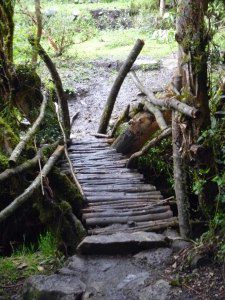
When we reached camp, our porters were already there. They had set up our camping tents as well as the kitchen tent and the dining tent. We sat down for our late afternoon tea and snack – popcorn and saltine crackers with your choice of teas or hot chocolate – and listened to the light rain tiptap on the tent roof. This was followed by a short break to get our tents in order: sleeping pads inflated and sleeping bags well lofted. We each grabbed our head lamp as it was near dark and headed back to the tent for dinner. We shared stories and got to know each other all a little better. Our two camp mates were from Europe, a young man from Denmark and a woman from the Netherlands. We spoke English as that was our common language though my boys sometimes held conversations on the trail with Fredy in Spanish. And we shared lots of stories, as campers are wont to do.
After we had relaxed a while, Fredy told us that he had a solution for both my youngest and me. It was possible to each hire a porter to carry our backpacks on the following day so that we did not have the extra weight holding us back. I felt ambivalent. I was disappointed in myself and my body but I was also relieved that I wasn’t being told that I should turn back. I went to bed that night ready for sleep, anxious about the next day’s hiking but with a head already full of unforgettable memories.
By the end of day one, we had gained 2,296 feet in elevation and hiked approximately 10 kilometers or about 6 miles. Our overnight camp at Yuncachimpa was at 3,300 meters or 10,824 feet, a couple of hundred feet higher than camping in Toulomne Meadows at Yosemite National Park.
My boys were still up for adventure and spent some of their time spider hunting before hitting the sack!
Three years ago, my family was living in Buenos Aires, Argentina. We took the time to travel and managed to see a good part of Argentina, Uruguay, Peru, and Bolivia. This is one post of many from that time period that originally appeared at Daily Kos. FYI – a diary is the same as a blog post in that forum.


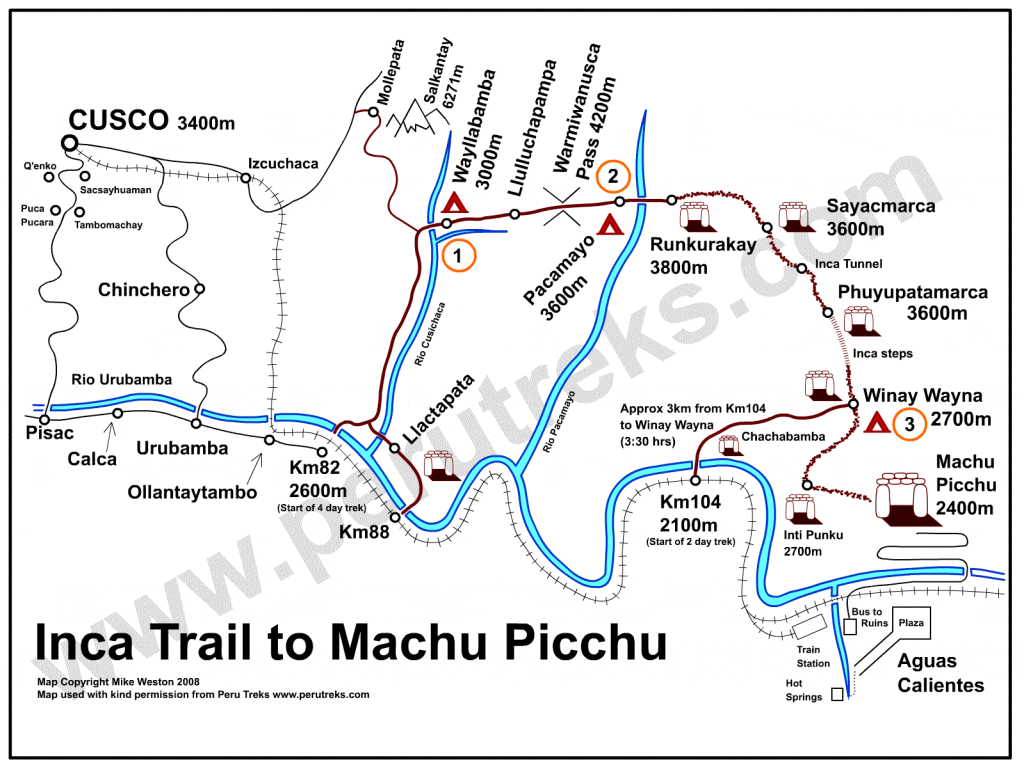
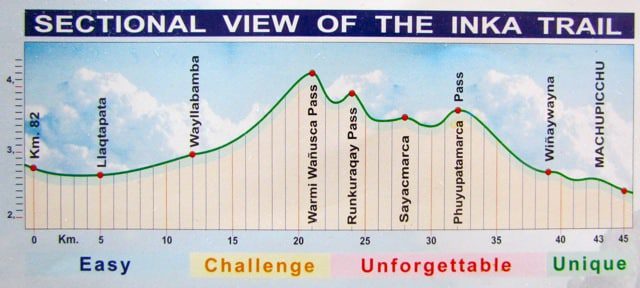

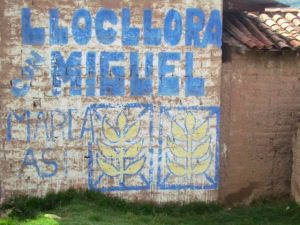

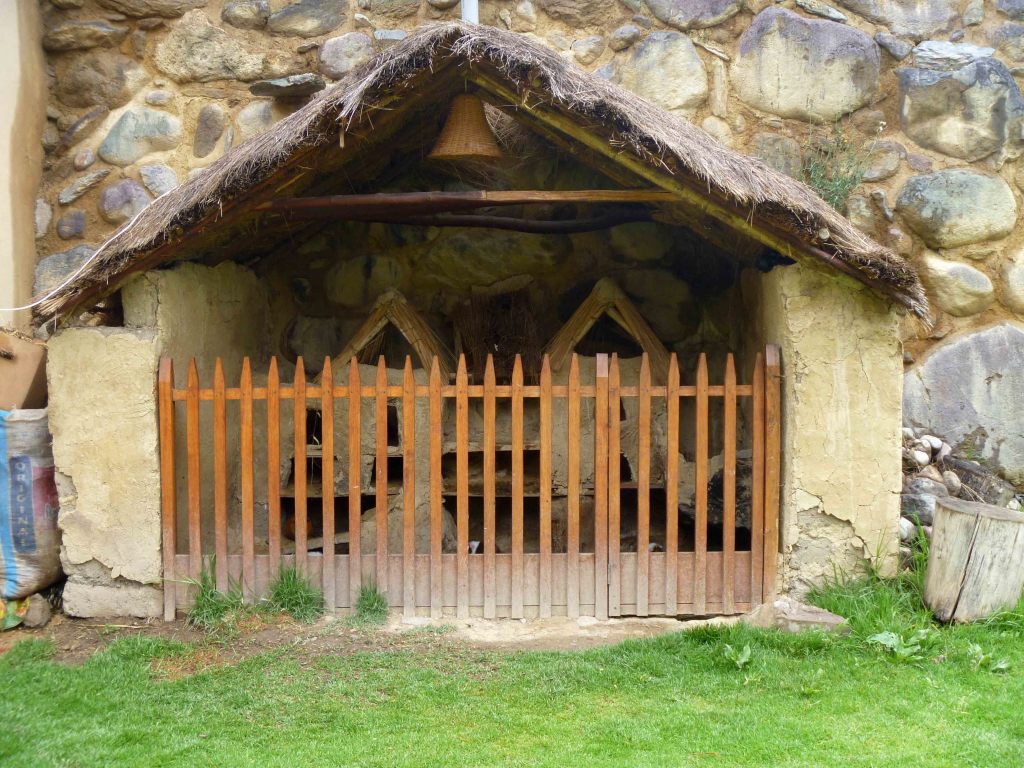


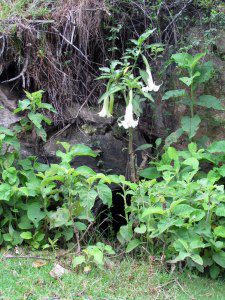




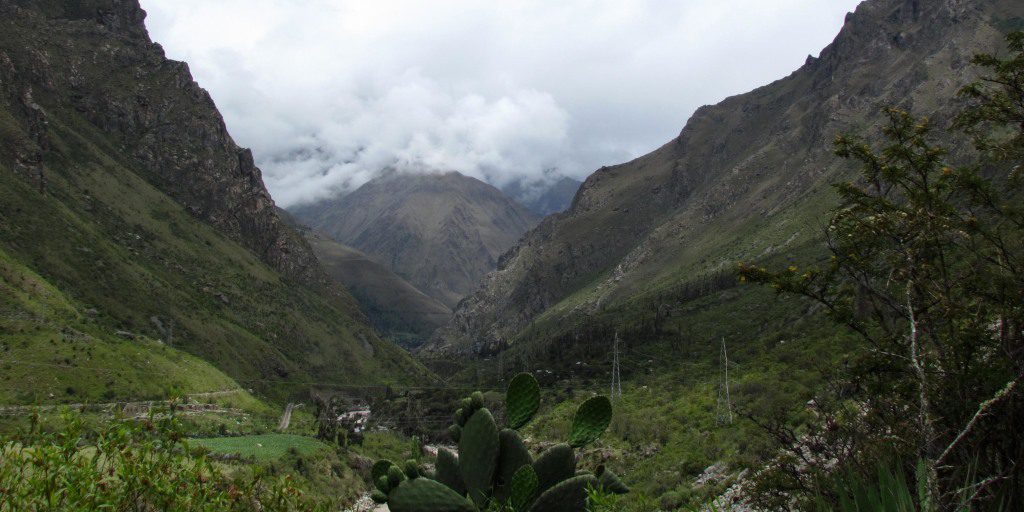
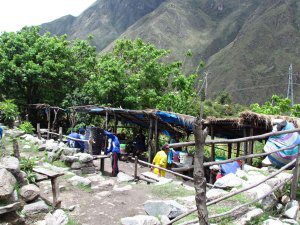
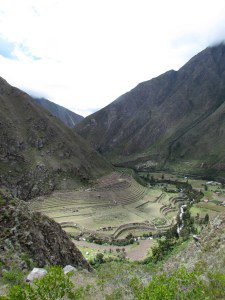

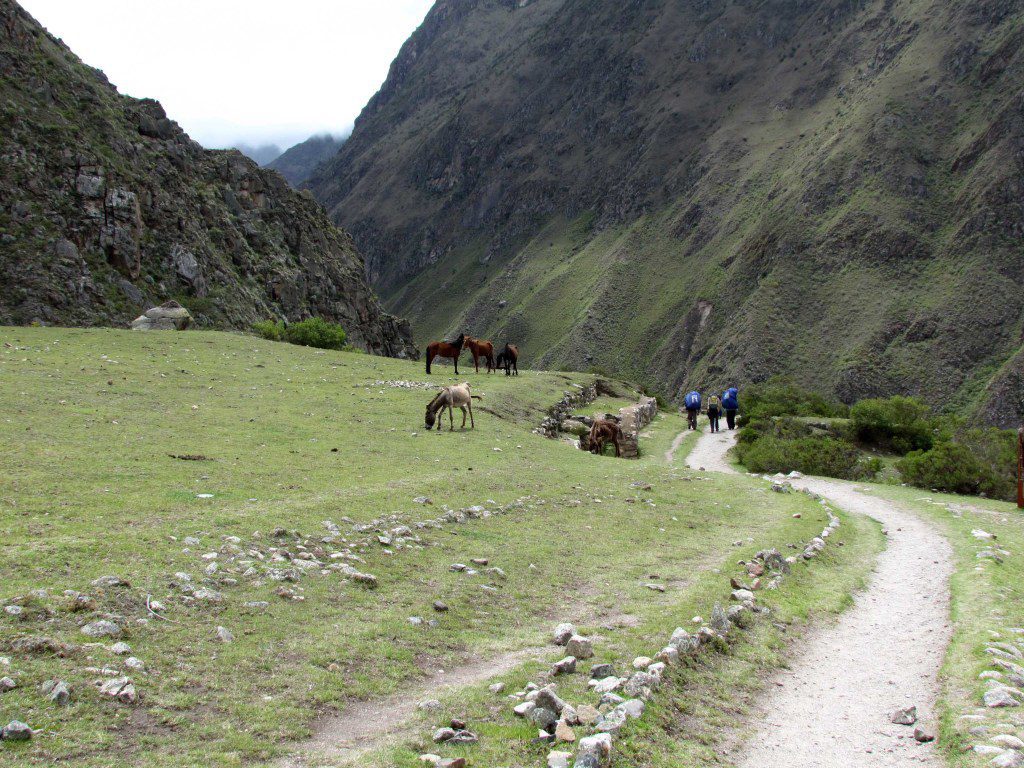
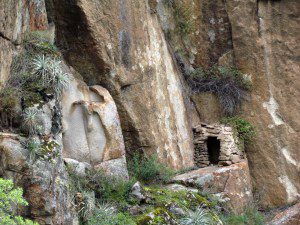

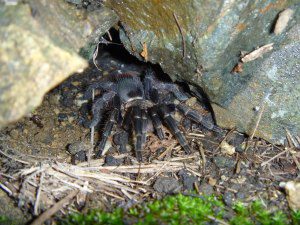
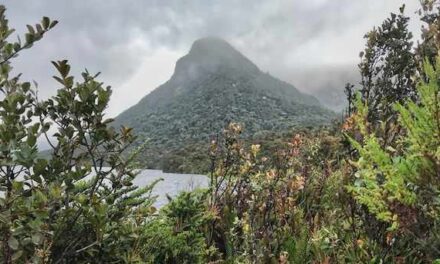
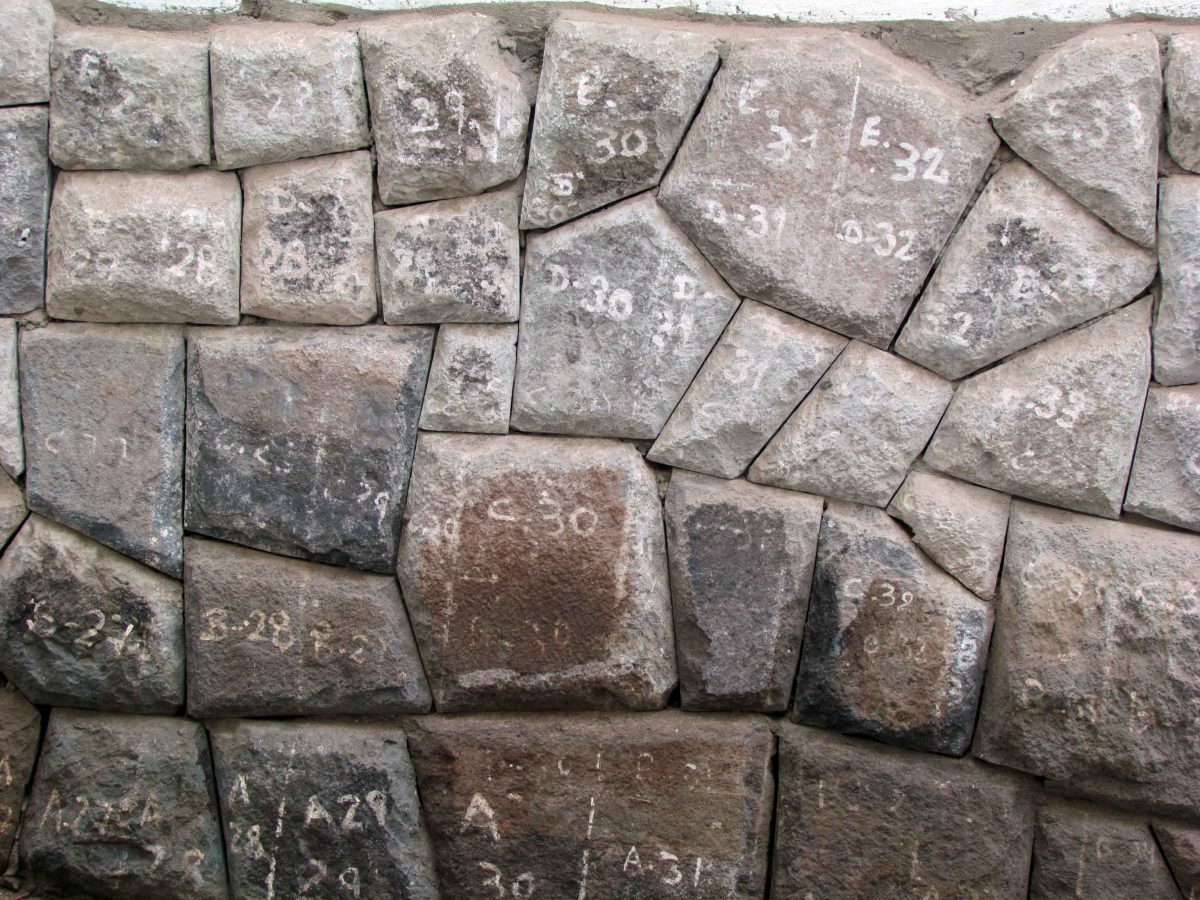
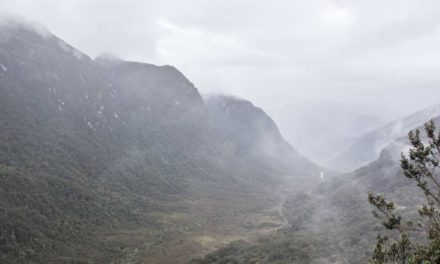
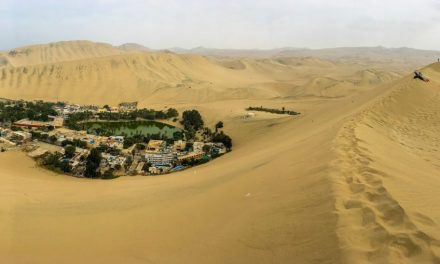

















When does this blog get published as a coffee table book? When are you getting a publishing agent?
I guess I need to learn how to market myself better! Working on it slow but sure.